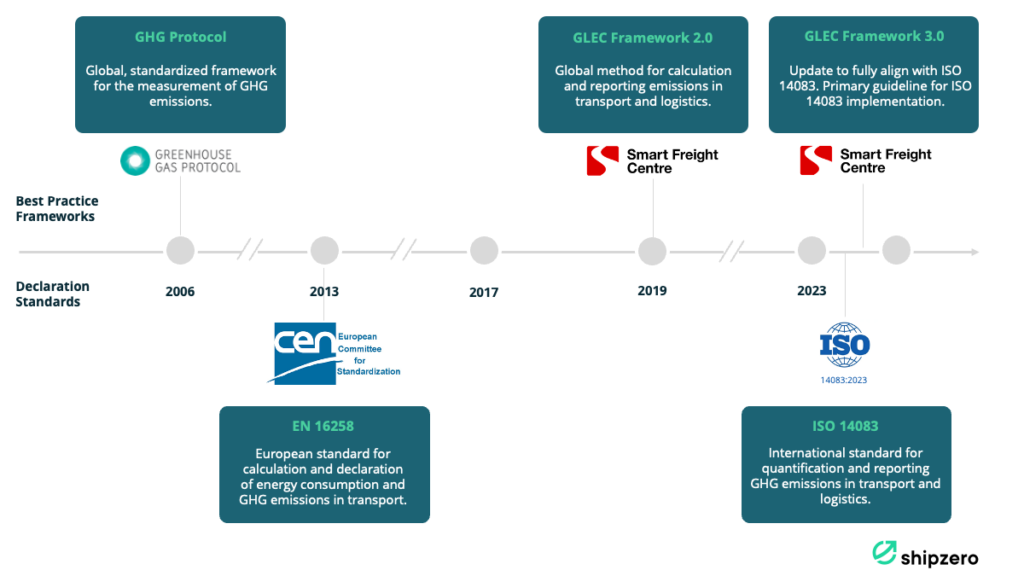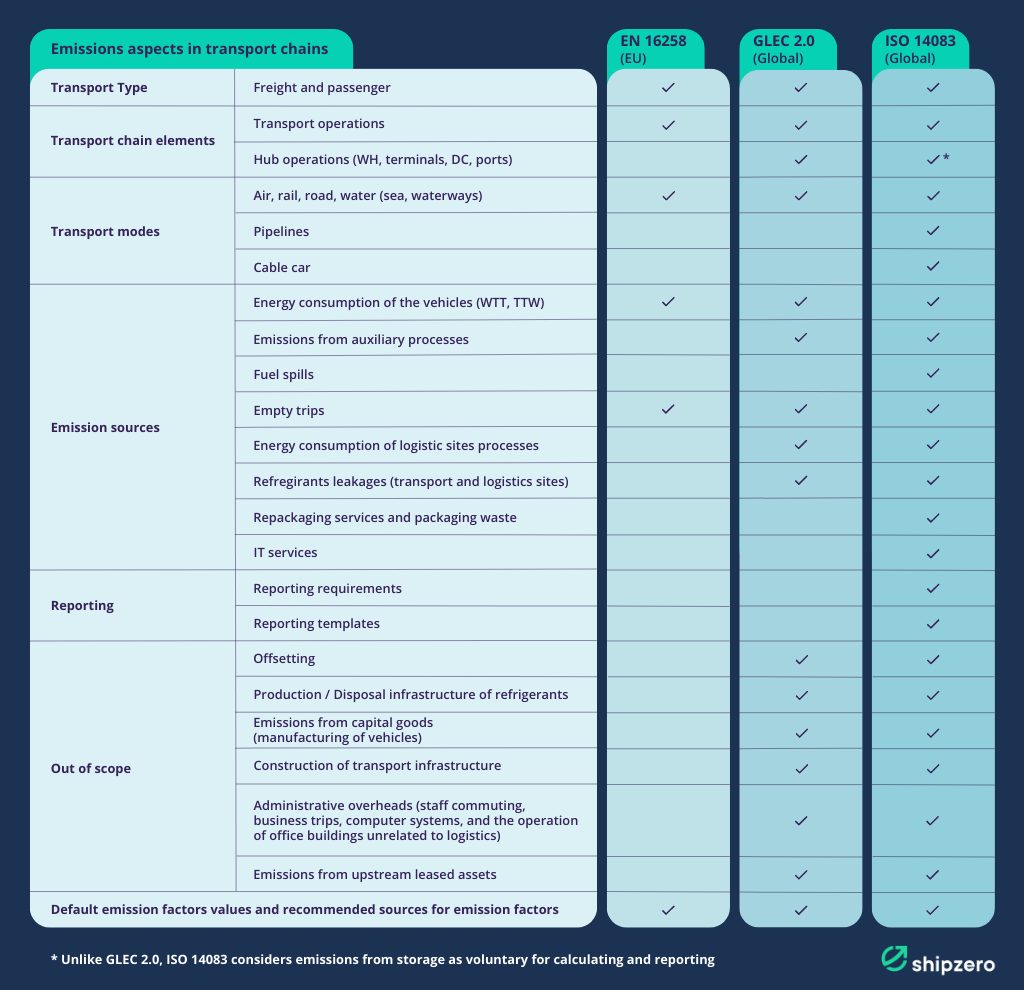In March 2023, the ISO 14083 standard came into effect, providing a globally aligned approach to quantifying and reporting greenhouse gas emissions in multimodal and global transportation chains. This article looks closely at what the new ISO 14083 standard covers, for which companies it is relevant, and how it differs from existing frameworks and guidelines.
The path to an international carbon accounting standard
The introduction of the new ISO 14083 marks a new phase of global standardization of GHG emissions accounting and reporting in logistics. This standard builds on a decade of development and incorporates established accounting principles such as EN 16258, GHG Protocol, and the GLEC framework for accounting and reporting logistics emissions (figure 1). As a result, this will enable a broader range of stakeholders, including logistics companies, customers, investors, governments, and international bodies, to widely adopt and embrace these principles. The new standard serves as the latest consensus for calculating and reporting logistics emissions, providing a reliable and consistent approach for all stakeholders involved.

1. Unlocking the Scope of ISO 14083: What is covered?
ISO 14083 is a comprehensive guideline that provides the necessary steps for effective data collection, calculation and reporting of greenhouse gas emissions in a global supply chain.
Which important aspects of transport chain are addressed by ISO?
Transport modes covered:
Whether air, rail, road, sea, inland waterway, pipeline or cable car transport, the ISO standard provides specific guidelines for data collection and reporting. Detailed information distinguishes between mandatory, voluntary, and excluded data elements, making it easier for companies to determine what is essential to their calculations.
Types of hubs covered:
ISO 14083 recognizes that emissions generated within transportation hubs should be accounted as a part of the transport chain. It encompasses a wide range of hubs, including rail and road terminals, cross-docking sites, airport terminals, seaport terminals, and distribution centers. If primary data from hub-related services is not available, secondary data (e.g., throughput processed) can be used to estimate GHG emissions.
Offsetting accounting:
While carbon offsetting actions and emissions trading are important tools in many companies’ climate strategies, ISO 14083 emphasizes their separation from GHG emissions quantification and reporting. This means that the outcomes of offset measures or GHG emissions trading, such as the EU Emissions Trading System (ETS) or any carbon offsetting certificates, may not be considered for quantifying and reporting GHG emissions from transport operations.
2. For whom is the new standard relevant?
It is relevant for all organizations that want and need to calculate logistic emissions for the logistic services they use (owned or contracted), e.g., logistic service providers, logistic operators, shippers, and others. It covers freight and passenger transportation and transfer processes (hubs).
3. What are the Highlights of ISO 14083?
Subject of the analysis:
The transport chain and all activities within this chain that cause greenhouse gas emissions. All transport and hub operations required to move freight or passengers from origin to destination are to be considered (see figure 2).
System boundaries:
All emissions resulting from a shipment or passenger movement are included in the calculation scope, including all transport and hub operations (Table 1).
System boundaries, what is excluded:
Emissions from capital goods (manufacturing of vehicles), business travel, employee commuting, upstream leased assets (assets owned but not used and leased to third parties). Offsetting measures are not subject to accounting and reporting requirements.
Input data:
The ISO standard provides flexibility in the data to be used. Companies are encouraged to use primary data for emissions calculations (e.g., exact volumes of energy and fuel consumed for a logistics operation). However, secondary data (modelled or as a fallback also default values) can be used as a starting point. A set of default values is included in ISO 14083 and GLEC, but the use of default values refers only to the lowest possible level of the ISO standard.
Calculations granularity:
GHG emissions should be calculated at the level of individual transport or hub operations (specific transport leg or hub service). The reporting of emissions is also possible on a clearly defined aggregation level. Aggregation in this case means that transport legs and hub operations with similar characteristics are grouped and the aggregated emission intensity can be applied. This enables an analysis of emission intensity within the company across different locations and time periods as well as benchmarking outside the industry.
4. What is new in ISO 14083 compared to EN 16258 and GLEC 2.0?
- New emission factors are provided, and precise emission factor requirements for fuel, energy, and alternative fuels (biofuels, e-fuels) are specified.
- The scope of analysis is extended to include repackaging activities and IT technology-related emissions, both are voluntary for calculation.
- Emission reporting requirements are explained in detail and templates for reporting are provided.
- New standard enables consistent tracking and comparison of greenhouse gas emissions and intensity across sectors.
- The ISO standard will be an internationally recognized basis for future verification of greenhouse gas emissions in transport.
The table below summarizes the main aspects covered by ISO 14083 and the differences with EN 16258 and GLEC Framework 2.0

5. Is the data platform shipzero compliant with ISO 14083?
Yes, the data platform shipzero is in accordance with the new ISO standard. Accredited by the Smart Freight Center, we ensure that our emissions calculation platform,
- allows accurate accounting of GHG emissions throughout transport chains of our clients, according to the guidelines and standards recognized by logistics industry, and in compliance with GHG protocol requirements,
- incorporates the latest officially published emission factors,
- allows emissions allocation on a shipment and a customer (consignee) basis.
The following figure illustrates the elements of the transport chain for which GHG emissions shall be calculated according to the new ISO14083. All these elements are captured via the shipzero modules “Transport” and “Logistics Site” so that our customers can accurately calculate all emissions of the transport chain on shipment level.

The Smart Freight Center is currently updating the GLEC Framework to ensure full alignment with the new ISO standard. Version 3.0 is expected to be published in September 2023. As a GLEC-accredited organization, we follow SFC in this process and continuously implement necessary adjustments to the data platform.
An expert view can help – we support you with your CO2 accounting in compliance with the new ISO 14083 standard. shipzero enables companies to easily measure and analyze emissions data – for audits, client reports and analyses to identify reduction potential for your path towards net-zero. Feel free to take the opportunity to talk to our sustainability and logistics experts.



